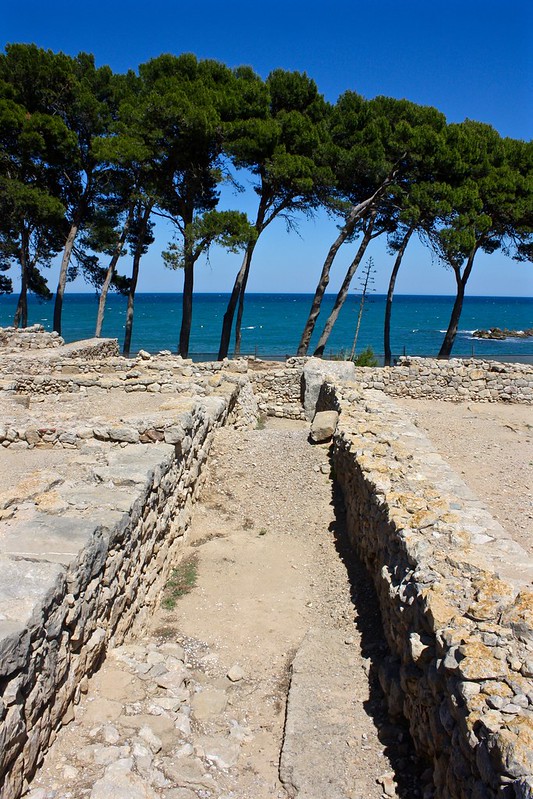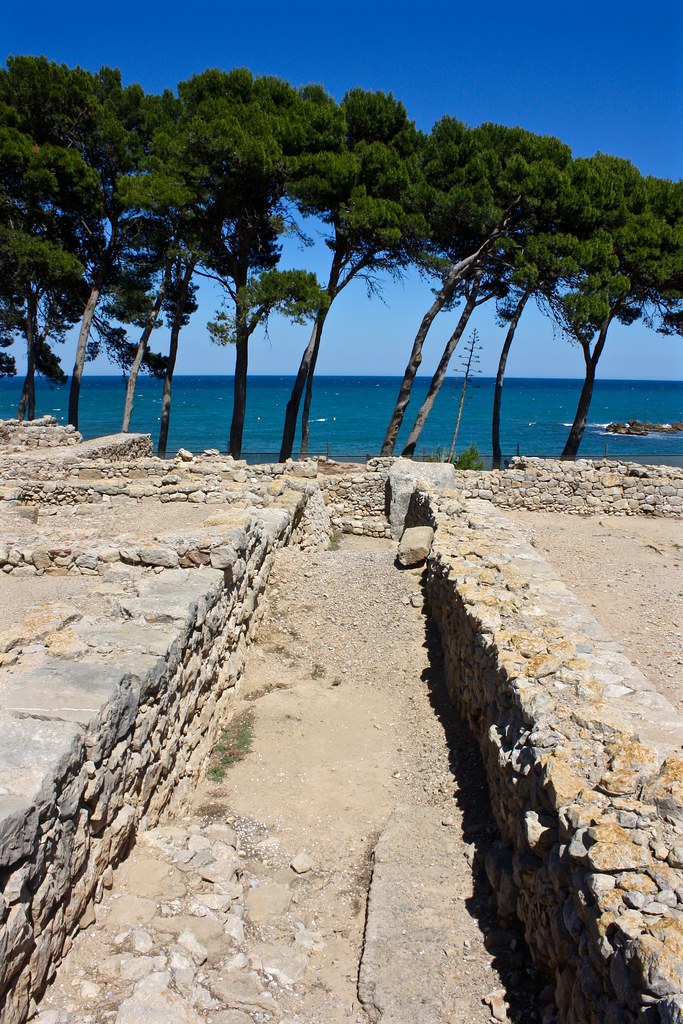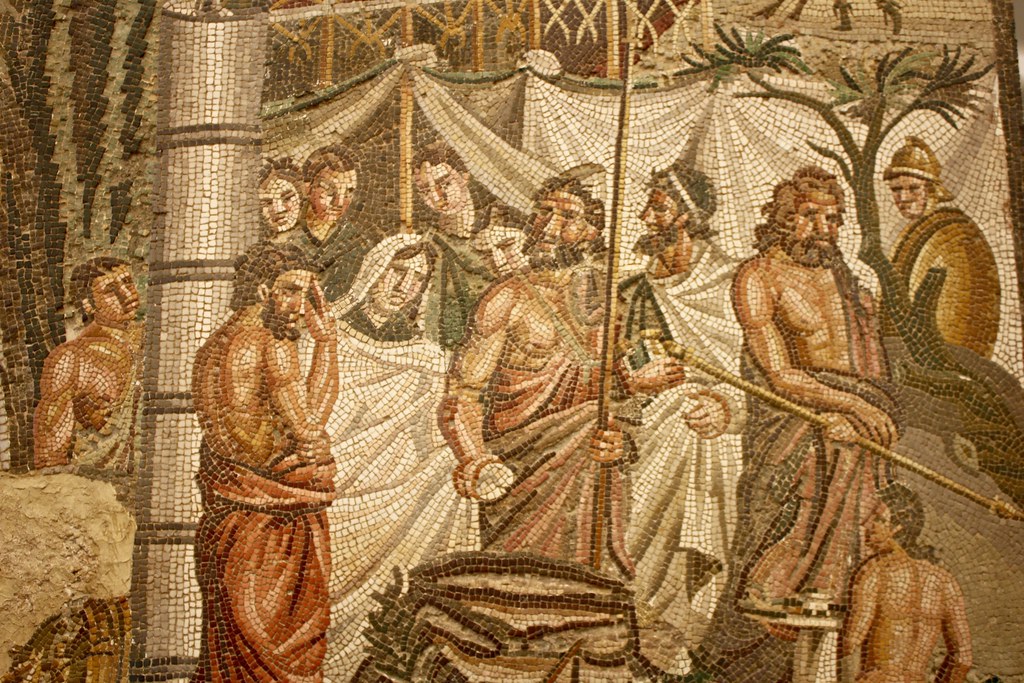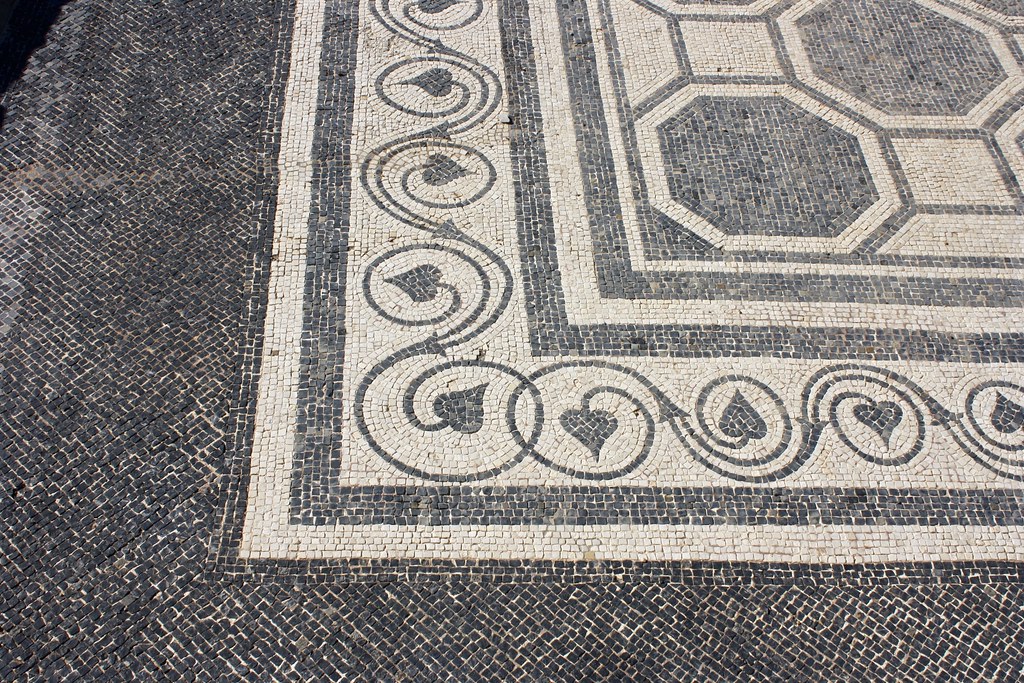Empúries: Greek & Roman Ruins on the Costa Brava
Whenever I’m on a trip that involves taking a lot of public transit, I often think about how many “layers deep” I am in connections that have brought me where I currently am. A Travel Inception, if you will.
As part of my exploration of northeast Spain two years ago, I left my initial base in the Gràcia neighborhood (1) of Barcelona up to Girona (2), and from Girona I daytripped to Figueres (3), going further north from Figueres that same day to the tiny coastal resort of L’Escala (4).
I was seven layers deep, counting the shuttle to the airport in Santiago de Compostela (5), the flight from Santiago to Barcelona (6), and the commuter train ride into central Barcelona (7).
But if you also count one of the most ancient ruins in Spain as a time travel machine, it adds up to eight.
If the name Empúries reminds you of a Victorian-era emporium, you’d be right on the money, as these ruins started as a Greek trading post in the 6th century BCE. Pronounced in modern Catalan as “um-POOR-ree-us” [əmˈpu.ɾi.əs], the archaeological site consists of a lost Paleopolis (older Greek settlement), a haphazard Neapolis (newer Greek settlement), and a rectangular Roman city. Although the oldest part of Empúries is today occupied by the village of Sant Martí d’Empúries, the Greek Neapolis and the Roman town have both been excavated and are open fortime travel visits.
I started my exploration of Empúries on the Greek side of town, of which there honestly isn’t much to see at all. But I was tired hiking out here from where the bus had dropped me off in L’Escala to the south, so I caught my breath leaning against stones hewn well over two thousand years ago.
Here I imagined how this site would have been at its founding: a lonely trading outpost at the edge of the known world, weeks away from Greece by ship and yet a crucial first contact between the Iberian Peninsula and the “civilized world.”
Places like Empúries mark the beginning of 2,000 years of foreign powers dominating Spain, first by Greek and Phoenician traders and then by Roman and Carthaginian imperialists, who were followed by Visigothic barbarians from central Europe and the Moors from North Africa.
Empúries was born a Greek settlement, but it came of age as the Roman town of Emporiæ, a rectangular, walled urbanization just to the north of the tiny Greek town. I found this section of the complex a lot more interesting than the Greek part, if only because it was much more well-preserved and contained several large public works.
There were exquisite mosaics on par with those I’ve seen in places like Pompeii and Itálica, as well as your standard crumbling foundations and creeping weeds. Part of the Roman forum had been reconstructed, and the amphitheater and palaestra (ancient workout space) lay right outside the town.
But those old city walls really gave me that connection to the past I had been craving. As I passed through the city gates and re-entered the 21st century, I turned around and giggled at the bas-relief penis carved out of the dry stone wall—but this wasn’t a junior-high defacement; instead, it was an ancient symbol of strength and prosperity.
And then the ground caught my eye: here in the year 2015, in the modern Kingdom of Spain, I could still see the grooves that had been worn into the paving stones by the countless comings and goings of ancient chariots, wagons, and carts…and now by my own two feet.
The bus company Sarfa runs five daily buses in both directions between Girona (the provincial capital) and the town of L’Escala. Be prepared to walk 20-40 minutes to the ruins depending on where you are in the town, but it’s a gorgeous stroll along the Mediterranean coast among trees and vacation homes.
If you were to visit the Costa Brava, would you take some time away from sun and sand to check out these ancient ruins? Tell me your thoughts below in the comments thread!

 |
| Greek ruins + the Mediterranean |
As part of my exploration of northeast Spain two years ago, I left my initial base in the Gràcia neighborhood (1) of Barcelona up to Girona (2), and from Girona I daytripped to Figueres (3), going further north from Figueres that same day to the tiny coastal resort of L’Escala (4).
I was seven layers deep, counting the shuttle to the airport in Santiago de Compostela (5), the flight from Santiago to Barcelona (6), and the commuter train ride into central Barcelona (7).
But if you also count one of the most ancient ruins in Spain as a time travel machine, it adds up to eight.
What is Empúries?
 |
| Mosaic scene in the museum |
If the name Empúries reminds you of a Victorian-era emporium, you’d be right on the money, as these ruins started as a Greek trading post in the 6th century BCE. Pronounced in modern Catalan as “um-POOR-ree-us” [əmˈpu.ɾi.əs], the archaeological site consists of a lost Paleopolis (older Greek settlement), a haphazard Neapolis (newer Greek settlement), and a rectangular Roman city. Although the oldest part of Empúries is today occupied by the village of Sant Martí d’Empúries, the Greek Neapolis and the Roman town have both been excavated and are open for
I started my exploration of Empúries on the Greek side of town, of which there honestly isn’t much to see at all. But I was tired hiking out here from where the bus had dropped me off in L’Escala to the south, so I caught my breath leaning against stones hewn well over two thousand years ago.
Here I imagined how this site would have been at its founding: a lonely trading outpost at the edge of the known world, weeks away from Greece by ship and yet a crucial first contact between the Iberian Peninsula and the “civilized world.”
 |
| The Roman city |
Places like Empúries mark the beginning of 2,000 years of foreign powers dominating Spain, first by Greek and Phoenician traders and then by Roman and Carthaginian imperialists, who were followed by Visigothic barbarians from central Europe and the Moors from North Africa.
Empúries was born a Greek settlement, but it came of age as the Roman town of Emporiæ, a rectangular, walled urbanization just to the north of the tiny Greek town. I found this section of the complex a lot more interesting than the Greek part, if only because it was much more well-preserved and contained several large public works.
 |
| Mosaic floors |
There were exquisite mosaics on par with those I’ve seen in places like Pompeii and Itálica, as well as your standard crumbling foundations and creeping weeds. Part of the Roman forum had been reconstructed, and the amphitheater and palaestra (ancient workout space) lay right outside the town.
But those old city walls really gave me that connection to the past I had been craving. As I passed through the city gates and re-entered the 21st century, I turned around and giggled at the bas-relief penis carved out of the dry stone wall—but this wasn’t a junior-high defacement; instead, it was an ancient symbol of strength and prosperity.
 |
| City gates |
And then the ground caught my eye: here in the year 2015, in the modern Kingdom of Spain, I could still see the grooves that had been worn into the paving stones by the countless comings and goings of ancient chariots, wagons, and carts…and now by my own two feet.
How to get there
The bus company Sarfa runs five daily buses in both directions between Girona (the provincial capital) and the town of L’Escala. Be prepared to walk 20-40 minutes to the ruins depending on where you are in the town, but it’s a gorgeous stroll along the Mediterranean coast among trees and vacation homes.
If you were to visit the Costa Brava, would you take some time away from sun and sand to check out these ancient ruins? Tell me your thoughts below in the comments thread!
